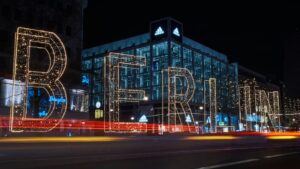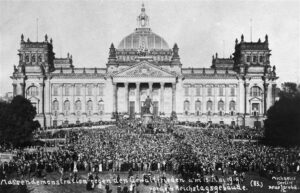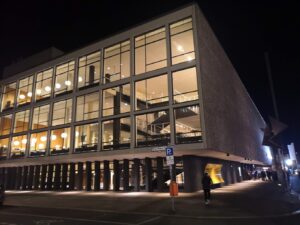The Berliner Dom is renowned as the largest Protestant church in Germany, while also serving as a vibrant cultural venue that continues to enchant visitors. And enchantment and awe were very much the point of building the church you see today.
Completed in 1905 during the reign of Kaiser Wilhelm II, the present-day Berliner Dom was designed to showcase the prestige of the Hohenzollern dynasty and elevate Berlin’s status among Europe’s great capitals. The Kaiser had something of an inferiority complex and felt Berlin couldn’t take its rightful place among Europe’s imperial powers with a large showpiece church. After all, Paris had one, so did London and St Petersburg. So, the church you see today is very much a flex on the world stage, shouting out to all and sundry in those pre-World War One years «We Germans have arrived!»
Many Berliners refer to the Dom as a cathedral, but this isn’t technically right, since it is not a bishop’s seat but rather a parish church, one that once served as the dynastic church for the royal family. The Dom never lets you forget royal prestige, showboating and imperial politics can be as important as religious belief, for those in power.
Within the church lies one of Europe’s most significant royal burial sites, the Hohenzollern crypt. This vault is the resting place for nearly 100 sarcophagi spanning five centuries, containing members of the dynasty that once ruled Prussia and, later, Germany.
The Dom has a rich musical heritage too. In the 19th century, the eminent composer Felix Mendelssohn held the position of Generalmusikdirektor here, directing the choir and orchestra while composing new works for the church’s services. The tradition of outstanding music continues with the cathedral’s magnificent Sauer organ, one of the largest and most impressive instruments of its kind.
This is Berlin after all, so don’t forget that the city’s turbulent history is etched directly onto the fabric of the building. On the side of the church facing the busy road, visitors can still see scars from wartime shrapnel damage. But a rarer war relic is hiding in plain sight on the other side. Stand outside the Dom facing it, head up the stairs to the main landing, then turn left and walk to the far end, towards the museum. At the end, you’ll find an information stand with bullet holes still stitched across the face, a reminder of the city’s less spiritual past.





